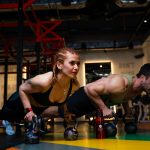Home Workout Routines: Effective Exercises for Total Fitness Without Equipment
Progress Tracking and Goal Setting
Monitoring advancements and setting realistic goals are crucial aspects of any workout regimen. Consistent tracking can help maintain motivation and ensure continuous improvement while adapting exercises to match progress.
Measuring Your Progress
Tracking progress involves regularly recording key fitness metrics. This can be done through methods like taking body measurements, noting workout durations, or logging repetitions and sets. Using a journal or a digital app helps in organizing these records efficiently.
Progress photos taken at regular intervals provide visual proof of changes. It’s beneficial to take these under similar conditions each time, such as the same lighting and attire. Assessing endurance levels by timing specific exercises also reflects increasing fitness.
Adjusting Routines for Growth
Adapting workout routines to reflect progress is necessary for continuous improvement. Increasing the intensity, duration, or difficulty of exercises ensures that the body remains challenged. For instance, adding more reps to a set or shortening rest periods can make a workout more demanding.
Listening to the body’s responses is key; signs like plateauing or consistent fatigue indicate the need for adjustment. Varying exercise types – integrating different cardio or strength training moves – can prevent monotony and target different muscle groups effectively.
Safety and Injury Prevention
Ensuring safety during home workouts is essential. One should always start with a proper warm-up to prepare the muscles and reduce the risk of injury. Dynamic stretches like leg swings or arm circles can help increase blood flow.
Maintaining proper form is crucial to prevent strain. Individuals should focus on executing each exercise correctly by keeping the core engaged, avoiding locking joints, and controlling movements. Mirrors can be useful for self-checking form.
Listening to the body is important. If any discomfort or pain arises, it is advisable to stop the activity immediately. Ignoring signals from the body can lead to serious injuries. Consulting with a healthcare professional if pain persists is a wise choice.
Including a cool-down routine helps in injury prevention. Stretching post-workout aids in reducing muscle stiffness and enhances flexibility. Gentle movements like walking or yoga poses can serve as effective cooldowns.
Gradual progression is key. One should avoid pushing too hard too soon. Increasing workout intensity or duration gradually allows the body to adapt and prevents overuse injuries.
Hydration and proper nutrition support workout safety. Staying hydrated helps maintain muscle function and reduces the likelihood of cramping. Consuming balanced meals provides the necessary energy for workouts and recovery.
Creating a safe workout environment is necessary. Ensuring a clear, clutter-free space prevents accidents. Using a non-slip mat on hard floors can also improve stability during exercises.
Wearing appropriate workout attire supports safety. Shoes with good support reduce the risk of foot and ankle injuries. Loose and comfortable clothing allows for a full range of motion, avoiding any restriction during exercises.



